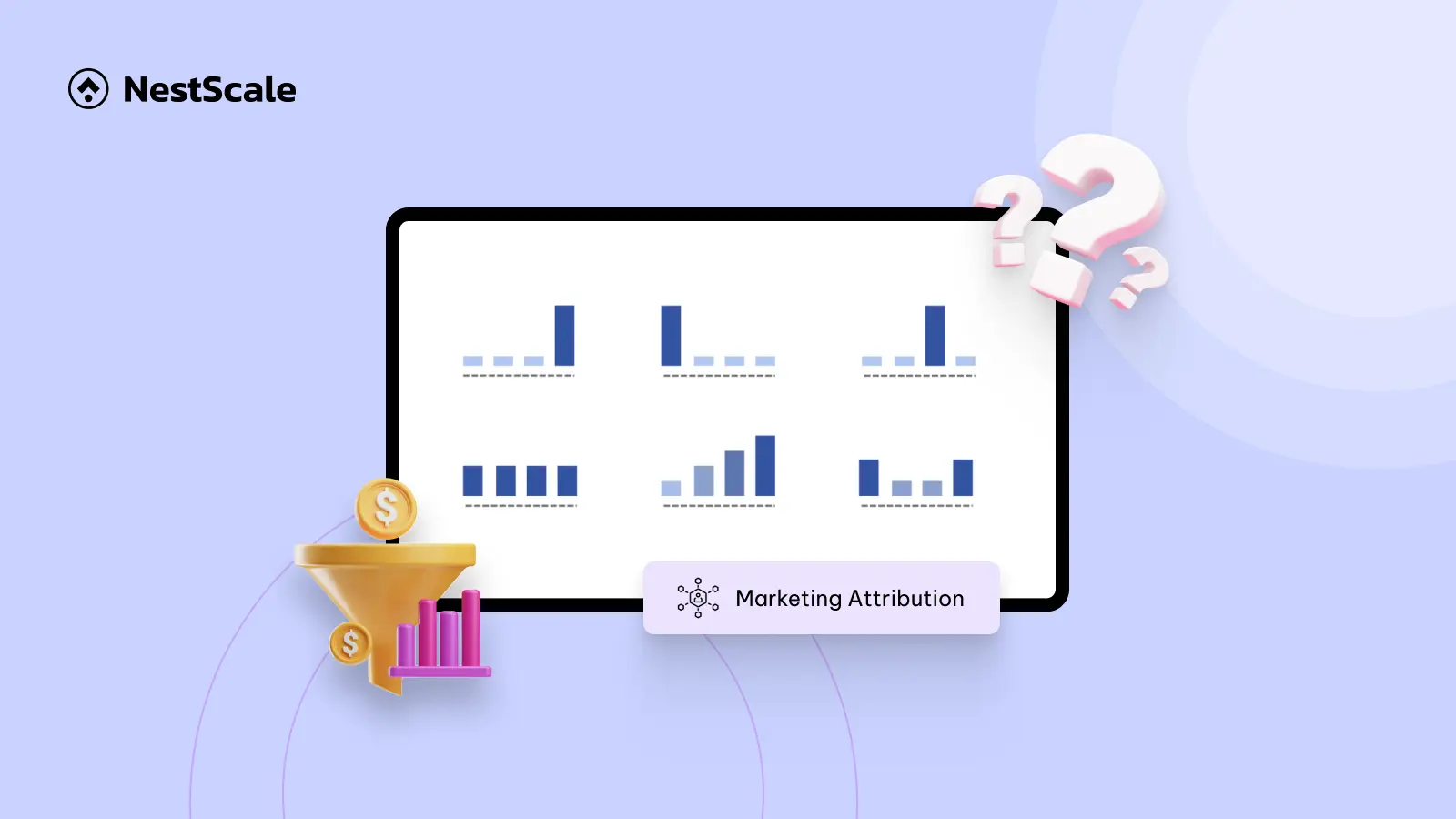Currently, eCommerce businesses have to keep up with constantly changing online shopping behaviors across multiple platforms. So to maximize reach and effectiveness, most brands now invest in various marketing channels. However, this makes it hard to know which ones truly drive sales. That’s partly because each platform has its own analytics, which often comes with fragmented data and unclear insights.
This is where marketing attribution steps in. It connects the dots across platforms to reveal how each channel and touchpoint contributes to conversions. Thereby, it gives businesses answers to several important questions. And to give you an answer to the question “What types of questions can Marketing Attribution answer?”, we’re about to cover:
- Which marketing channels drive the highest ROI?
- What is the role of each touchpoint in the conversion process?
- How can we optimize the customer journey to drive conversions?
- How do specific campaigns impact overall revenue?
- What is the incremental value of your marketing campaigns?
Let’s first discuss different types of marketing attribution model and how it can serve your business in making better marketing decisions.
Types of Marketing Attribution model
Here are the 6 most common marketing attribution models at a glance:
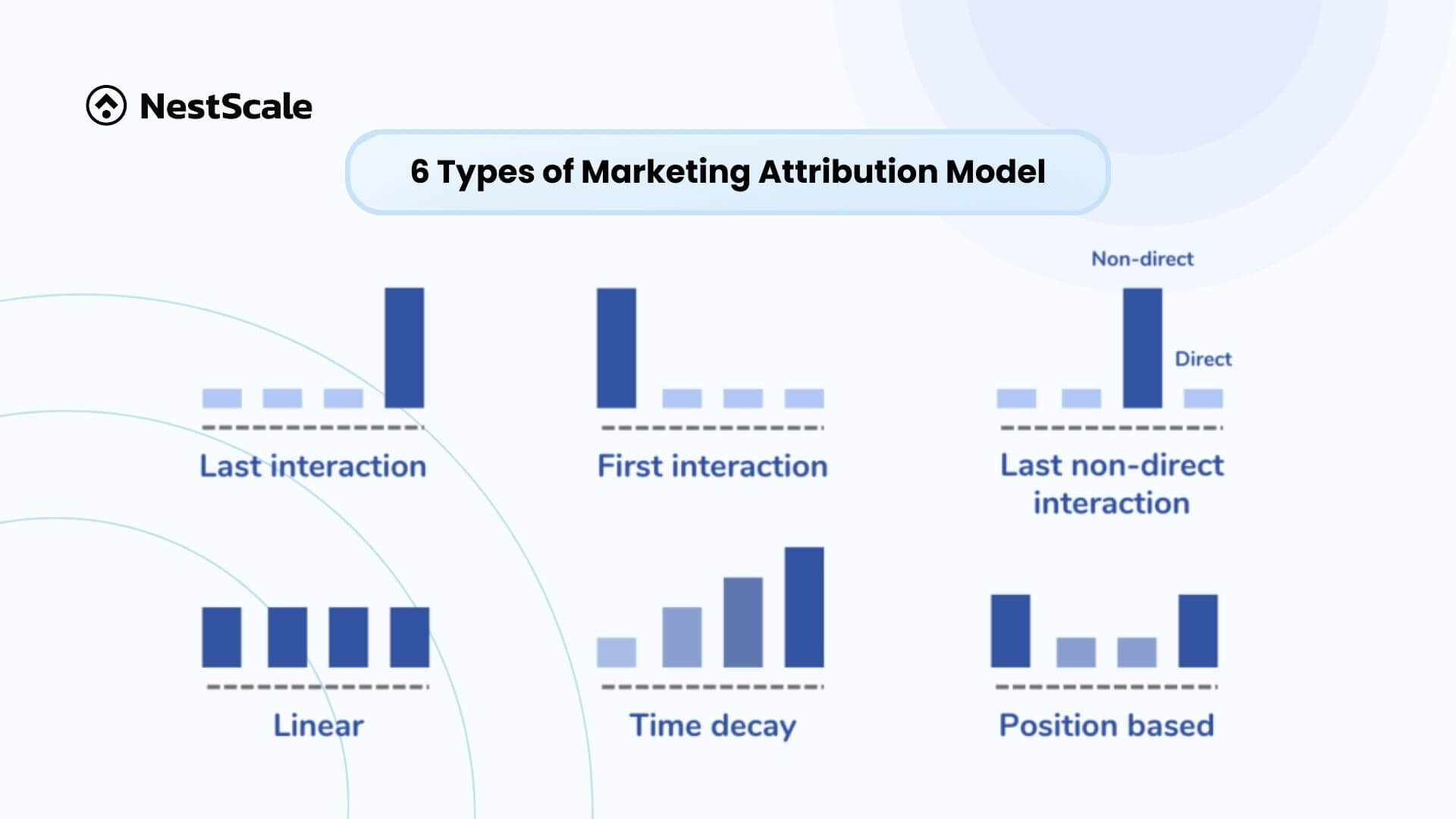
- Last-click: Assigns 100% of the credit to the last interaction a customer has before converting.
- First-click: Assigns 100% of the credit to the first interaction a customer has with your brand.
- Last non-direct: Assigns 100% of the credit to the last non-direct touchpoint a user interacted with before converting.
- Linear: Distributes credit equally among all touchpoints in the customer journey.
- Time-decay: Assigns more weight to touchpoints that occur closer to the conversion event.
- Position-based: Assigns 40% of the credit to the first and last interactions, and 20% to each of the middle interactions.
Why does Marketing Attribution matter?
At its core value, marketing attribution is important to any business to understand the effectiveness of each marketing channel and optimize strategies accordingly.
For large businesses, marketing attribution has always been a powerful tool to clarify the impact of each marketing channel across a broad, and complex customer base.
However, we found that in the case of eCommerce SMBs with limited budgets, marketing attribution can be useful to help them make the most of their marketing budget by understanding what works and what doesn’t to grow and scale easier.
What should your Marketing Attribution report include?
Marketing attribution can transform your strategy, but only if you know how to draw the right insights. Here are some key insights to consider:
- Customer journey analysis: Understand the paths your customers take before they make a purchase.
- Channel performance: Identify which marketing channels are driving the most conversions.
- ROI measurement: Determine the return on investment for each marketing effort.
- Conversion rates: Analyze how effective different touchpoints are at converting leads.
- Customer lifetime value: Estimate the revenue a customer will generate over their lifetime.
To gain these insights, your report should include:
- Comprehensive data collection: Gather data from all marketing channels and touchpoints.
- Clear attribution models: Utilize models like first-touch, last-touch, or multi-touch to assign value.
- Visualizations: Use charts and graphs for easy interpretation.
- Performance metrics: Track key metrics such as conversion rates and cost per acquisition.
- Actionable recommendations: Offer insights that lead to strategic marketing decisions.
By including these elements, your report will provide the clarity needed to optimize your marketing strategies effectively.
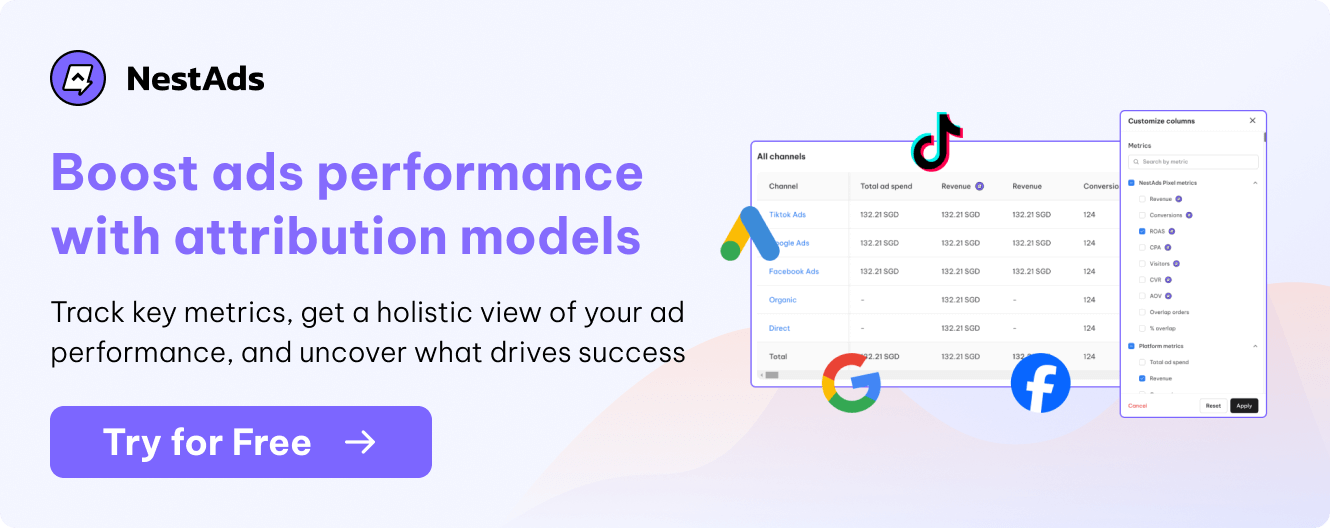
Crucial questions to be answered by Marketing Attribution
Now, if you grasp the basics of marketing attribution, let’s discuss further what types of questions can marketing attribution answer for your business.
Which marketing channels drive the highest ROI?
You can consider marketing attribution a roadmap showing which channels, such as Google Ads, social media, or email are truly delivering the most sales for the dollars you’re investing. Think of it as a way to finally understand which channels are pulling their weight and which may be wasting your budget.
For example, a customer first discovered your jewelry store through a Meta ad, later searched for your store on Google, and finally purchased after receiving a discount code in the email. In this case, you’re likely to credit Google for that sale and assume it’s your highest ROI channel based on last-click data.
However, attribution shows you the whole journey: Instagram created the initial interest, Google helped reinforce your brand, and email sealed the deal. With this insight, you can see that Instagram ads, even if not directly converting, are essential for getting your brand in front of new audiences.
As such, marketing attribution answers the ROI question by giving you an accurate view of what each channel contributes, so you can confidently allocate resources properly to different channels.
*FYI: A survey by Banzai revealed that 80% respondents using marketing attribution found it easier to prove marketing ROI.
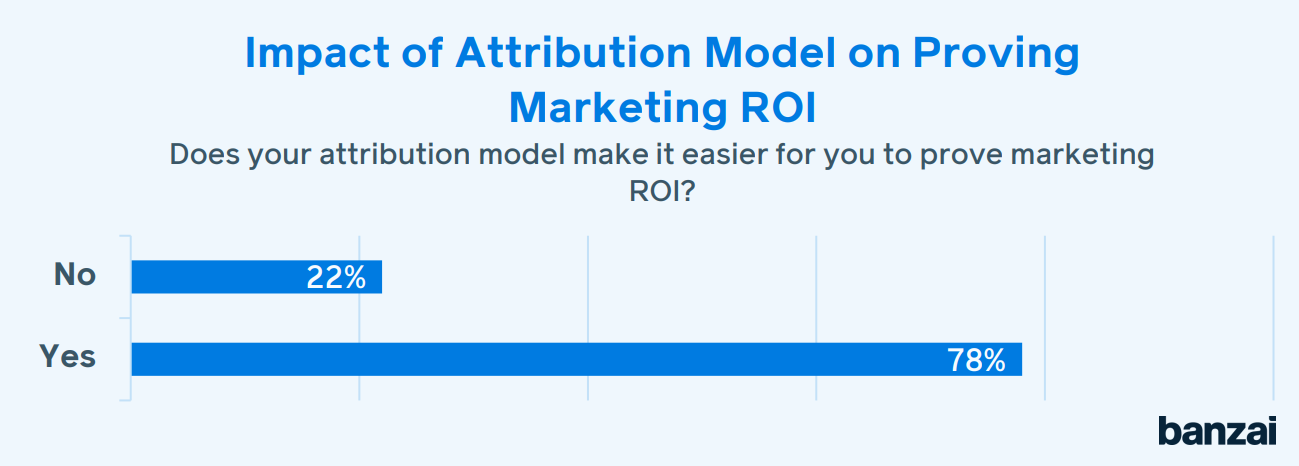
What is the role of each touchpoint in the conversion path?
A “touchpoint” is any interaction a potential customer has with your brand throughout the customer journey, from the moment they discover your product to when they decide to buy. These can be anything from seeing an ad on Instagram, clicking through a Google search, reading a blog, or opening an email.
Each of these interactions matters because it contributes to guiding that customer down the path to conversion. But here’s the thing: not all touchpoints have the same impact. Some serve as “introducers” that bring people in, others as “influencers” that build trust, and others as “closers” that make people finally commit.
Imagine you’re running multiple ads across Meta, Google, and email campaigns, but you’re not sure which of these touchpoints is pushing customers closer to a sale. It’s possible that you may risk spending on channels that don’t actually contribute to conversions, or missing out on optimizing potential ones.
Attribution breaks down the conversion journey, showing you how each touchpoint plays a part in getting customers to that final conversion. Besides, it also allows you to assign credit to each interaction such as first click, last click, or even a blend of all touchpoints along the way.
How can we optimize the customer journey to increase conversions?
Marketing attribution and the customer journey are closely connected because both focus on understanding how customers interact with a brand from start to finish point. Customer journey connects each potential stage of a customer’s experience, while attribution assigns measurable value to them. Thus, businesses can see the sequence of touchpoints and the specific impact of each one as well.

Furthermore, attribution doesn’t just show the final point where a customer converts, it reveals the sequence of touchpoints along the journey. This means you can identify which steps keep customers engaged and which might cause drop-offs.
For example, if a significant portion of customers abandon their carts but later return through a retargeting ad, businesses might increase the frequency or targeting precision of these ads to better capture them. Businesses could also test variations of high-impact touchpoints, like an email with a special offer, to make each stage of the journey more compelling.
Marketing attribution makes it easier for businesses to lean into what truly works about how customers convert, rather than guessing. Thereby, businesses can build a journey that effectively nurtures customers and increases the likelihood of conversion.
How do specific campaigns impact overall revenue?
When you’re looking at marketing data of specific campaigns, it’s easy to focus on the key metrics that show high engagement or return on ad spend (ROAS) in the ad platform itself. However, high numbers there don’t always mean real sales for the business. This can be misleading if the ad platform is showing “great” performance, but those results aren’t translating into actual revenue.
The key here is alignment. The goal of marketing attribution is not just to make the marketing numbers look good on the platform but to choose a model that truly reflects how these marketing efforts support the business’s actual objectives.
So if you’re reporting an “amazing month” based on ad platform metrics but your business real sales are down 20%, something is off. It seems that you’re giving too much credit to certain channels or interactions that don’t directly drive sales.
In a nutshell, attribution can tell you a true story of which marketing activities genuinely help grow revenue. So when the attribution model aligns with business revenue, both the marketer and the business owner will see the same picture of success.
What is the incremental value of your marketing campaigns?
Incremental value refers to the additional impact a marketing channel has on driving conversions that would not have occurred without the presence of that specific channel. For businesses, understanding incremental value is crucial because it tells them which channels are genuinely driving growth versus those that may only appear to be contributing by being visible at some stage of the customer journey.
Incremental lift is a key concept here. It’s about identifying the direct boost in conversions that a specific channel is responsible for. For instance, if adding an ad leads to a measurable increase in conversions that wouldn’t have happened otherwise, we can consider that channel to have generated incremental lift.
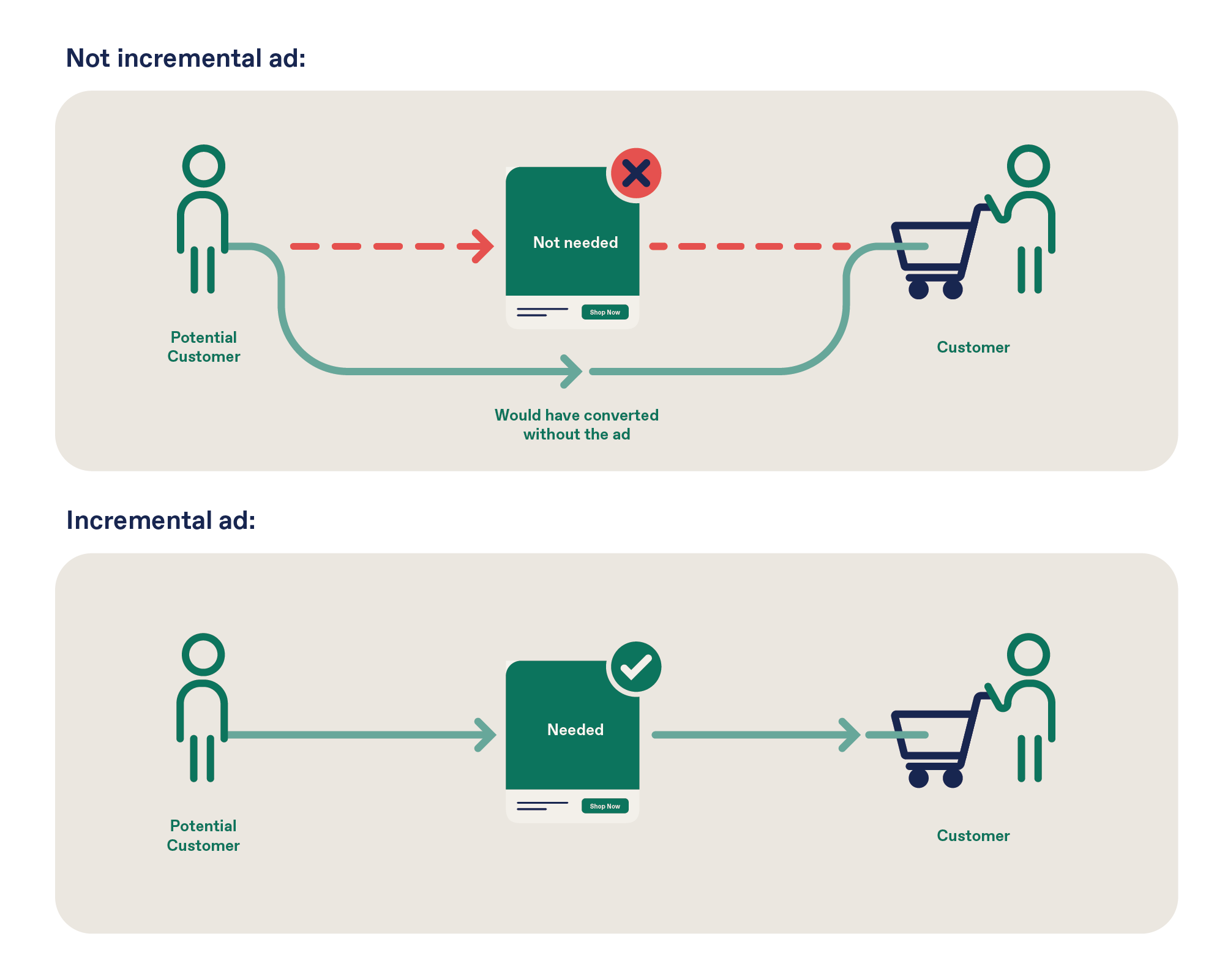
Attribution helps quantify this by tracking customer journeys and crediting each channel based on its role. It shows which channels actually add conversions beyond what would have happened without them.
FAQs
What is the fundamental purpose of marketing attribution?
Nowadays, businesses often come across multi-touch journeys to the final conversion. At this point, marketing attribution can assist businesses in deciding which steps are more valuable in the journey, in relation to revenue.
As the number of conversions remains the same, the story is not about making this number look “successful”. Instead, marketing attribution helps us identify which steps or touchpoints are most influential in the journey to focus resources on and make the biggest impact on revenue.
Does applying marketing attribution require much time and resources?
To take advantage of marketing attribution, you have to put great time and effort into it, especially if you’re starting from scratch. Building an effective attribution model involves collecting data across all your marketing channels, analyzing how each touchpoint contributes to conversions, and regularly adjusting based on performance insights. And, what matters is that all these steps need to be highly accurate to make sure the model work. So this is probably not an easy task.
However, marketing attribution software is a good option to opt for if you want to utilize marketing attribution. You can give NestAds a try. By centralizing data across all your ad platforms, NestAds gives you a complete view of your marketing performance on a single dashboard.
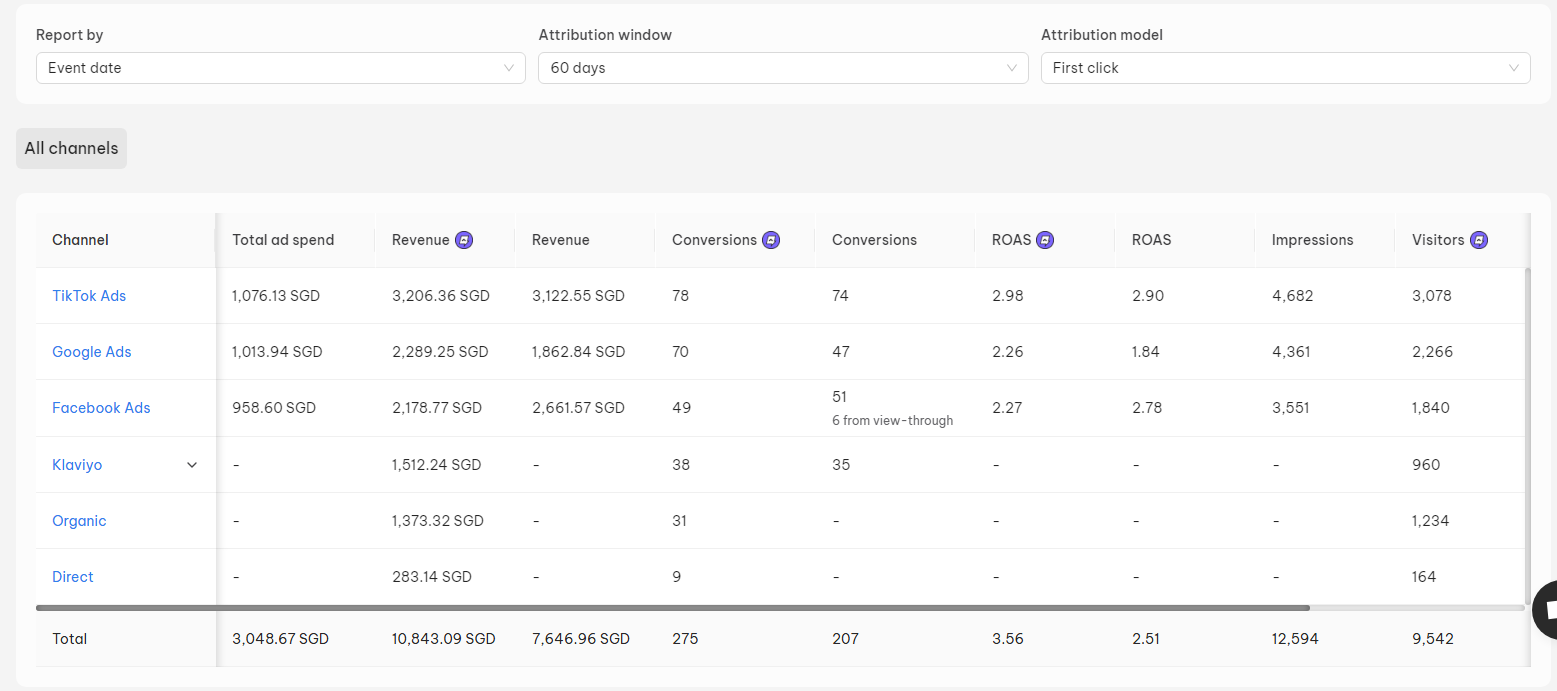
It also simplifies reporting and reveals customer journey insights that help you make smarter, data-driven decisions. With everything in one place, you can save time and resources to focus on the channels and strategies that drive growth.
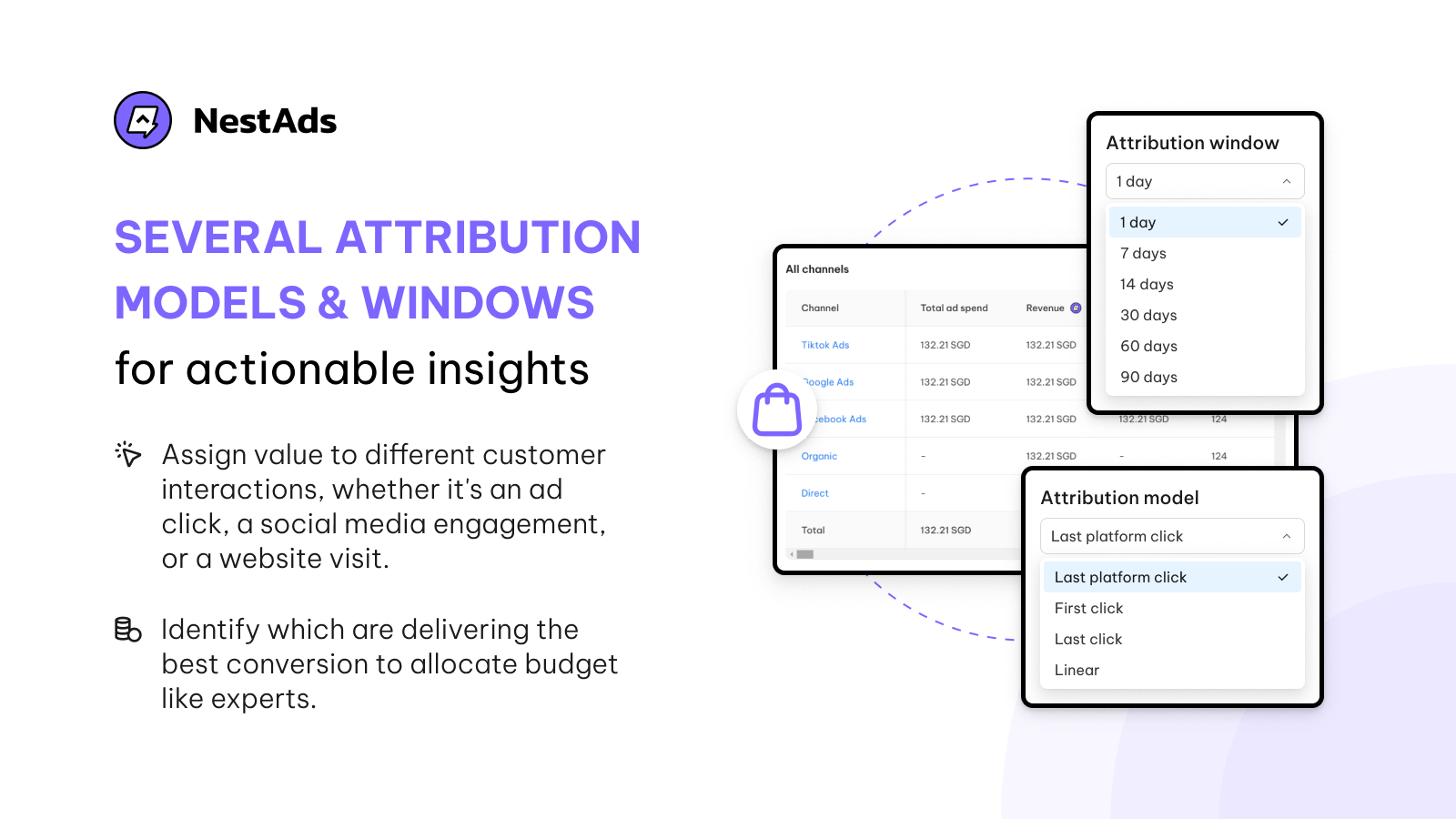
What is the most suitable timeframe for Marketing Attribution?
The most suitable timeframe for marketing attribution depends on various factors, including your industry, customer journey length, and the specific goals you’re trying to measure. However, here are some general guidelines to consider:
- Short-term attribution (1-3 months): E-commerce, retail, and other industries with shorter sales cycles.
- Medium-term attribution (3-6 months): B2B, SaaS, and other industries with longer sales cycles.
- Long-term attribution (6+ months): Industries with complex customer journeys and long sales cycles.
Remember to take this for your reference only. You need to come closer to your customer and their journey to choose a timeframe that fits most. And a small tip for you, avoid assumptions on your customers, and always make data-driven decisions.




































